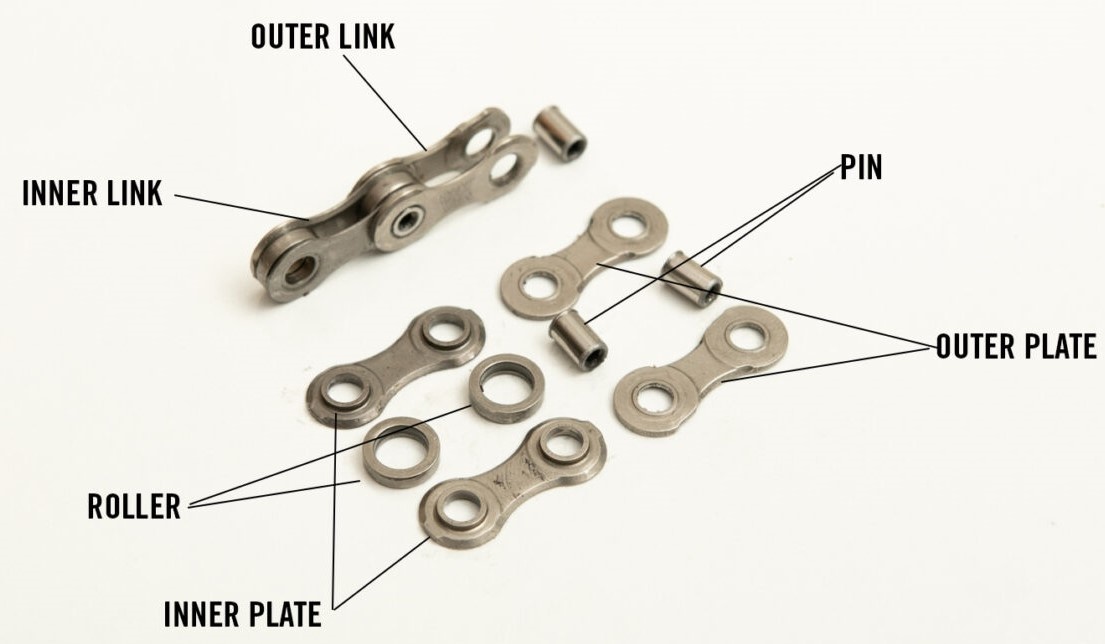Pedal Driven Co | 210 N. Park Ave. Sanford FL 32771 | 407-416-7200 | [email protected] | Tues-Sat 10am to 6pm | Sanford Bike Shop
Your cart is currently empty
Picture this, you're out there with all your buds just pedaling away having a good time, and you're likely not even thinking of the wear on your drivetrain. As you rip along, with your chain spinning through the gears, you're leaving microscopic drivetrain dust everywhere you go.
Drivetrain wear isn't something that you will notice from ride to ride or mile to mile, however, eventually you'll go to grab that next gear for that grueling climb or fast decent and *click click click gear change* and you'll think, "wow that was odd" and keep on going. BUT STOP! That's your drivetrains first cry for help, and here we'll outline how to check your drivetrain over and ensure it's running as smoothly as it can for as many miles as possible.
That there is the million dollar question! Mileage on a chain, chainring, or cassette can very wildly based on which brand, model, riding type and even the environment you typically ride in. Nice easy spins around on pavement? Your drivetrain will most likely last much longer than riding off road in dirty and muddy conditions. Figure, a dirty drivetrain is bound to wear faster than a clean one and that's why we're here, right?
Checking that your drivetrain is clean, free of debris, and adequately lubricated is a fantastic start. A quick visual inspection of the chain and gears before and/or after each ride can help you keep an eye on wear.
A Chain, even though it seems like a fairly simple part of the bike is relatively complex. We'll explain the parts here so you can better understand how the chain works, and know what to look for when it wears. The sooner the chain is replaced once it's worn, the longer the rest off your drivetrain will last.
Inner and Outer Links make up the Wide and Narrow portions of the chain. These links are the connected to one another with Pins. Each Inner and Outer Link is made up of two Plates and are referred to Inner Plates when they are part of the Narrow portion and Outer Plates when they are part of the Outer Link. Each Pin passes through the Outer Plate then through and Inner Plate before passing through a Roller and then closing out by going through another Inner and Outer Plate. The Rollers are what come into direct contact with the teeth of your chainring and cassette and where all the power transfer from your pedals to your rear wheel go.

Chain wear is likely going to be the first thing to wear out in your drivetrain. As time goes on and the miles rack up your chain overtime develops slack in the pins and the rollers and is generally referred to as "chain stretch" as this happens the chain links and rollers won't line up perfectly between the teeth of the chainring and cassette. This causes the chain noisier as it struggles to engage the cassette and chainring as smoothly. To check chain wear, you can purchase an inexpensive Chain wear indicator to keep in your pack or toolbox.
Shop - Chain Wear Indicator Tool in our shop!
And use this quick video to help you learn how to use it!
A cassette is the priciest of the drivetrain and will typically show visible signs of wear that are easy to spot. These visual queues come in the forms of, large changes in coloration, sharp "shark toothy" teeth on the gears, and in rare cases, teeth that are broken or missing completely. As a rule of thumb, a cassette will make typically make it through three chain replacements so long that the chains were replaced before they became too worn.
Cassettes teeth and gear faces have seemingly random shapes and cuts in them, but these are designed by the manufacturer to aid in "grabbing" the chain profile and lift or drop it from gear to gear during shifting and do it as smoothly as possible. As these teeth and gear profiles loose their crisp edge, shifting can skip, become slow, or not shift at all.
A common symptom of a cassette being worn past it's usefulness is when a new chain is installed shifting becomes noticeably worse right away. When this happens, replace the cassette right away as it'll prematurely wear out that shiny new chain.
Generally the slowest to wear item of your drivetrain is the chainring and is the most tricky to measure. Checking the chainring for wear is similar to the Cassette, check for any sharp "shark toothy" teeth or for and missing teeth. If the teeth all look good visually, then we can check for chain retention by pinching the outer links of the chain and gently pulling the chain away from the frontside of the chainring. If you can create a gap that you're able to see through between the chain and chainring, this indicates that one is worn. If this is done with a new chain, then the chainring is the culprit.
Shop - Chainrings
02.13.2023